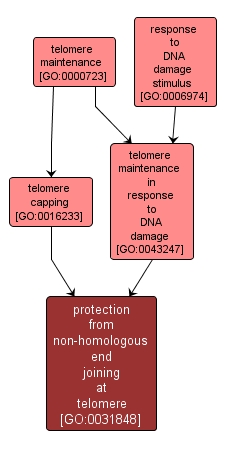GO TERM SUMMARY
|
| Name: |
protection from non-homologous end joining at telomere |
| Acc: |
GO:0031848 |
| Aspect: |
Biological Process |
| Desc: |
A process that prevents non-homologous end joining at telomere, thereby ensuring that telomeres do not fuse. |
Synonyms:
- protection from NHEJ-mediated telomere fusion
|
|

|
INTERACTIVE GO GRAPH
|














